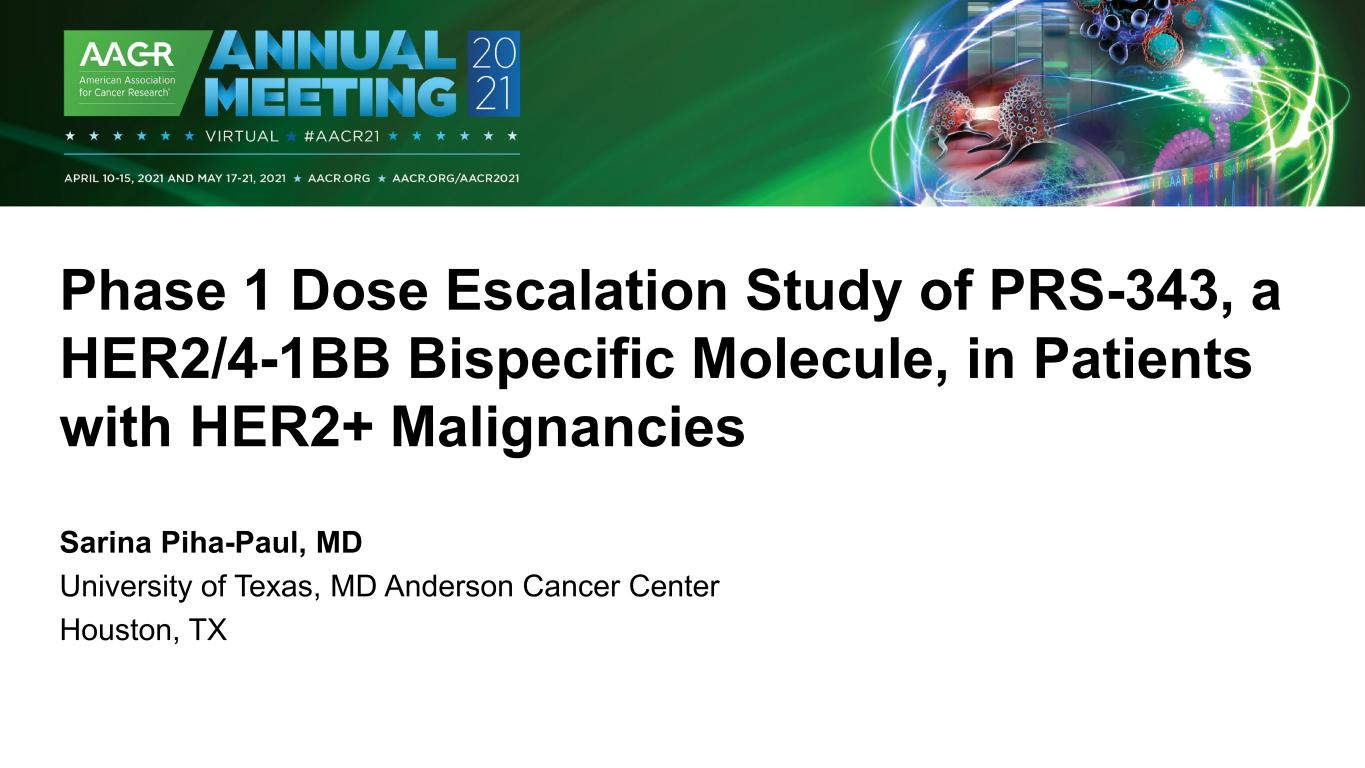
Phase 1 Dose Escalation Study of PRS-343, a HER2/4-1BB Bispecific Molecule, in Patients with HER2+ Malignancies Sarina Piha-Paul, MD University of Texas, MD Anderson Cancer Center Houston, TX

Disclosure Information My Disclosures: l receive the following Clinical Trial Research Support/Grant Funding through the institution: AbbVie, Inc.; ABM Therapeutics, Inc.; Acepodia, Inc; Alkermes; Aminex Therapeutics; Amphivena Therapeutics, Inc.; BioMarin Pharmaceutical, Inc; Boehringer Ingelheim; Bristol Myers Squib; Cerulean Pharma, Inc.; Chugai Pharmaceutical Co., Ltd; Curis, Inc.; Daiichi Sankyo; Eli Lilly; ENB Therapeutics; Five Prime Therapeutics; Gene Quantum; Genmab A/S; GlaxoSmithKline; Helix BioPharma Corp.; Incyte Corp.; Jacobio Pharmaceuticals Co., Ltd.; Medimmune, LLC.; Medivation, Inc.; Merck Sharp and Dohme Corp.; Novartis Pharmaceuticals; Pieris Pharmaceuticals, Inc.; Pfizer; Principia Biopharma, Inc.; Puma Biotechnology, Inc.; Rapt Therapeutics, Inc.; Seattle Genetics; Silverback Therapeutics; Taiho Oncology; Tesaro, Inc.; TransThera Bio; and NCI/NIH; P30CA016672 – Core Grant (CCSG Shared Resources) and I will discuss off label use and/or investigational use in my presentation. DO NOT POST
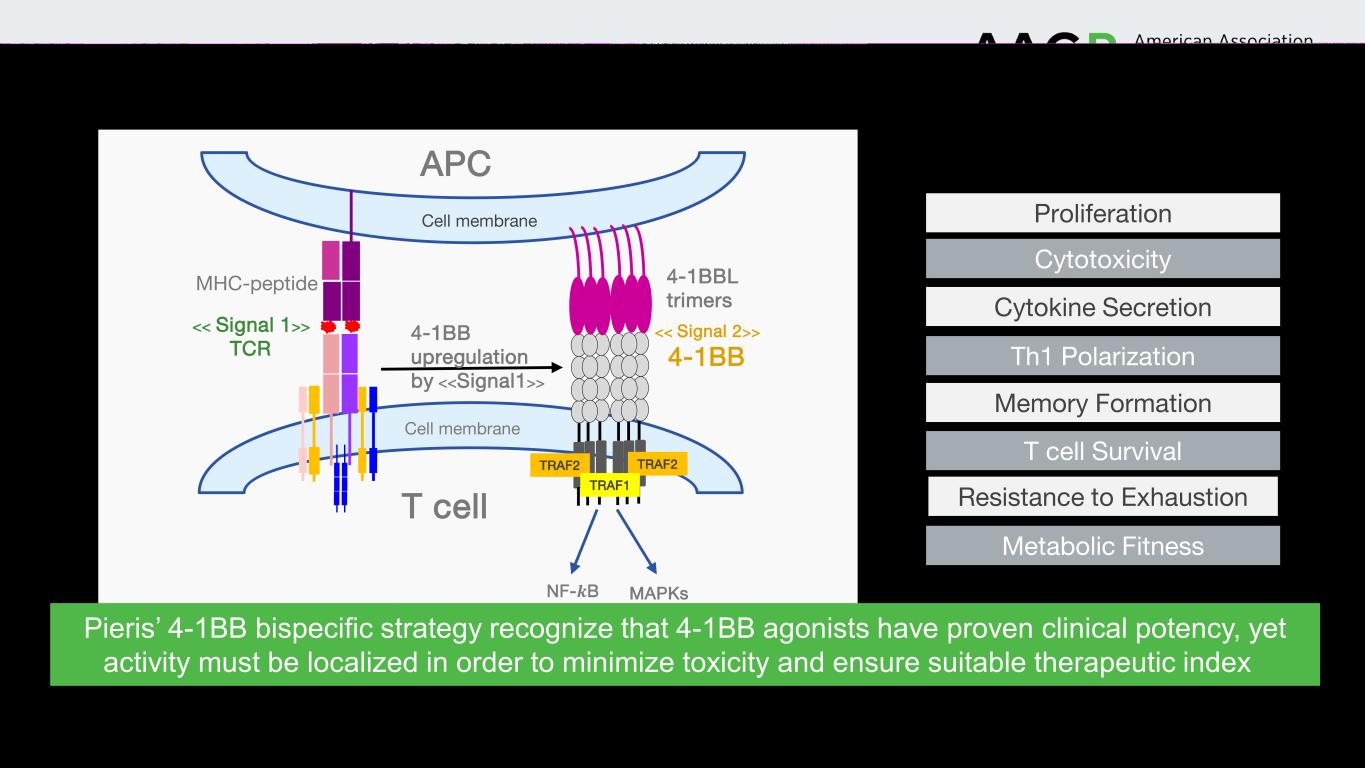
Unique Attributes of 4-1BB Agonism Proliferation Cytotoxicity Cytokine Secretion Th1 Polarization Memory Formation T cell Survival Resistance to Exhaustion Metabolic Fitness << Signal 1>> TCR Cell membrane T cell << Signal 2>> 4-1BB TRAF2 TRAF2 TRAF1 NF-����B MAPKs Cell membrane MHC-peptide 4-1BBL trimers 4-1BB upregulation by <<Signal1>> APC Pieris’ 4-1BB bispecific strategy recognize that 4-1BB agonists have proven clinical potency, yet activity must be localized in order to minimize toxicity and ensure suitable therapeutic index DO NOT POST
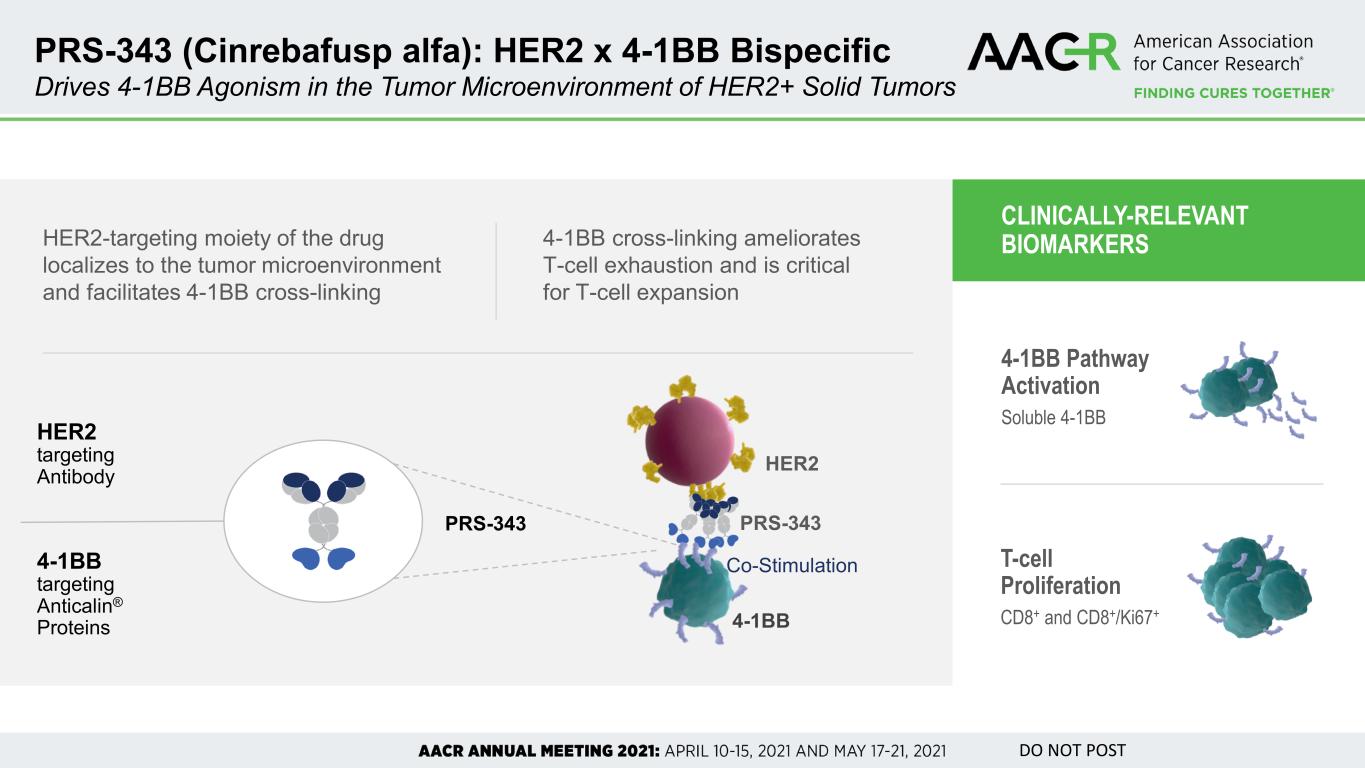
PRS-343 (Cinrebafusp alfa): HER2 x 4-1BB Bispecific Drives 4-1BB Agonism in the Tumor Microenvironment of HER2+ Solid Tumors CLINICALLY-RELEVANT BIOMARKERSHER2-targeting moiety of the drug localizes to the tumor microenvironment and facilitates 4-1BB cross-linking 4-1BB cross-linking ameliorates T-cell exhaustion and is critical for T-cell expansion HER2 targeting Antibody 4-1BB targeting Anticalin® Proteins PRS-343 4-1BB Pathway Activation Soluble 4-1BB T-cell Proliferation CD8+ and CD8+/Ki67+ HER2 PRS-343 Co-Stimulation 4-1BB DO NOT POST
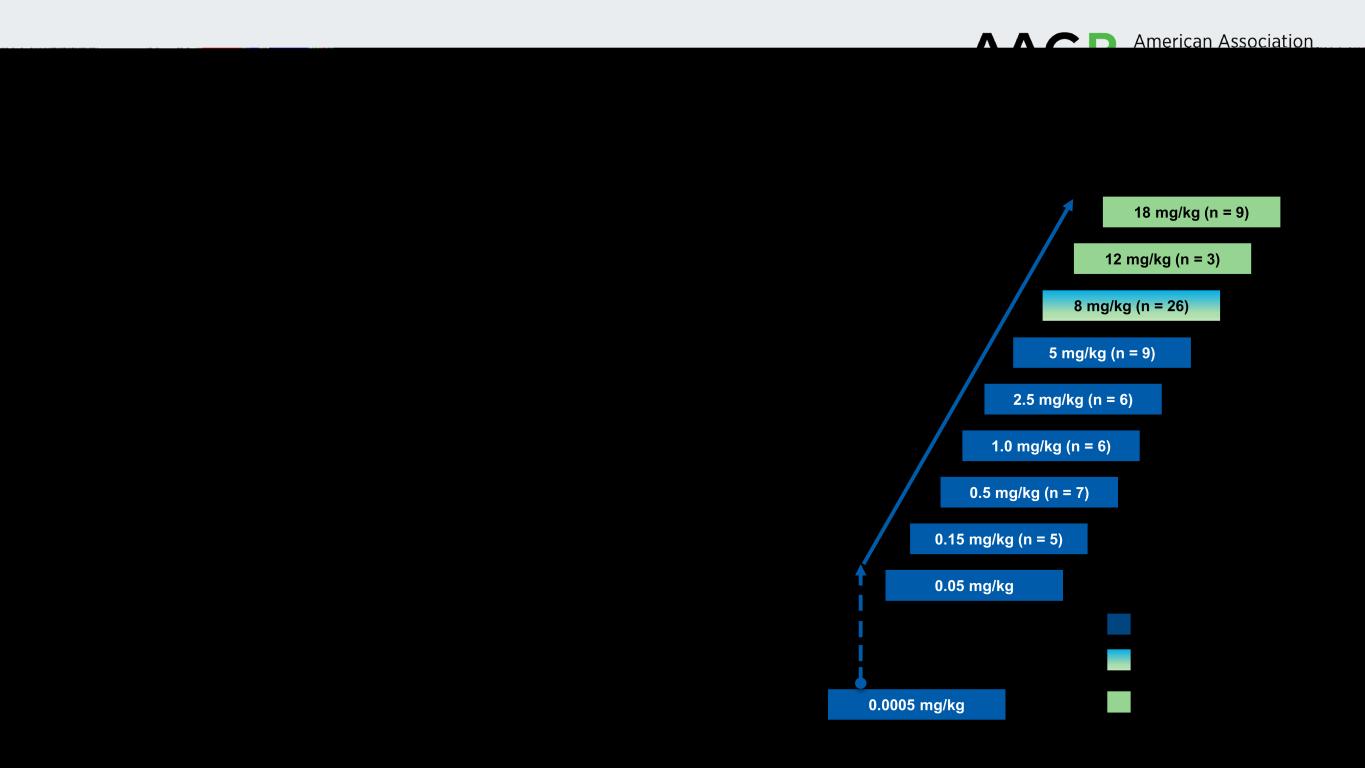
Ph 1 Monotherapy PRS-343 Study Study Objectives Primary: Characterize Safety Profile Identify MTD or RP2D Secondary: Characterize PK/PD & Immunogenicity Preliminary anti-tumor activity Key Eligibility Criteria Inclusion: Metastatic HER2+ solid tumors Breast & Gastric/GEJ ≥ 1 prior anti-HER2 Tx Measurable disease (RECIST v1.1) ECOG 0 or 1 Exclusion: Symptomatic or unstable brain metastasis Abnormal cardiac EF (< 45%) 0.0005 mg/kg 0.05 mg/kg 0.15 mg/kg (n = 5) 0.5 mg/kg (n = 7) 1.0 mg/kg (n = 6) 2.5 mg/kg (n = 6) 5 mg/kg (n = 9) 8 mg/kg (n = 26) 12 mg/kg (n = 3) 18 mg/kg (n = 9) (n = 7) Accelerated Titration Dose Escalation Study Design Q3W Q2W QW, Q2W & Q3W * Start of active dose range DO NOT POST
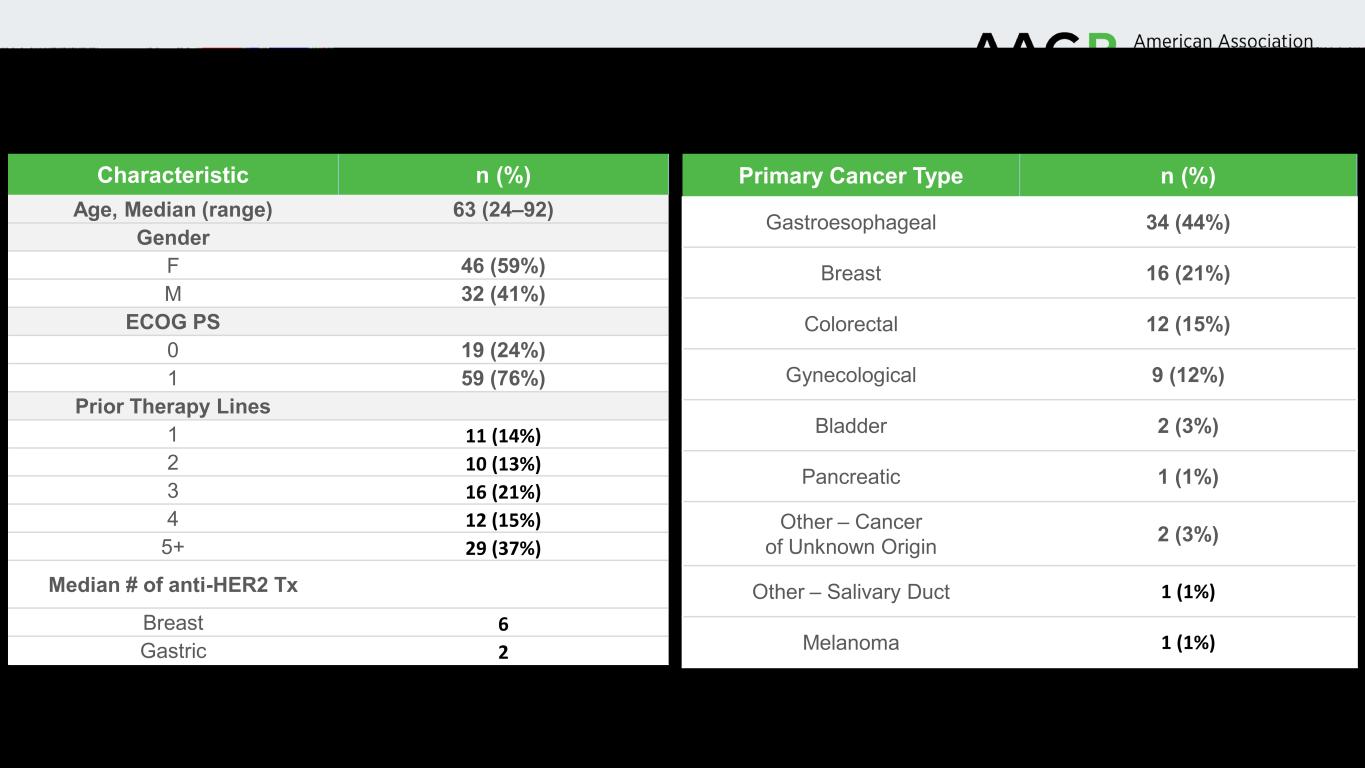
Baseline Characteristics (N = 78) Characteristic n (%) Age, Median (range) 63 (24–92) Gender F 46 (59%) M 32 (41%) ECOG PS 0 19 (24%) 1 59 (76%) Prior Therapy Lines 1 11 (14%) 2 10 (13%) 3 16 (21%) 4 12 (15%) 5+ 29 (37%) Median # of anti-HER2 Tx Breast 6 Gastric 2 Primary Cancer Type n (%) Gastroesophageal 34 (44%) Breast 16 (21%) Colorectal 12 (15%) Gynecological 9 (12%) Bladder 2 (3%) Pancreatic 1 (1%) Other – Cancer of Unknown Origin 2 (3%) Other – Salivary Duct 1 (1%) Melanoma 1 (1%) DO NOT POST
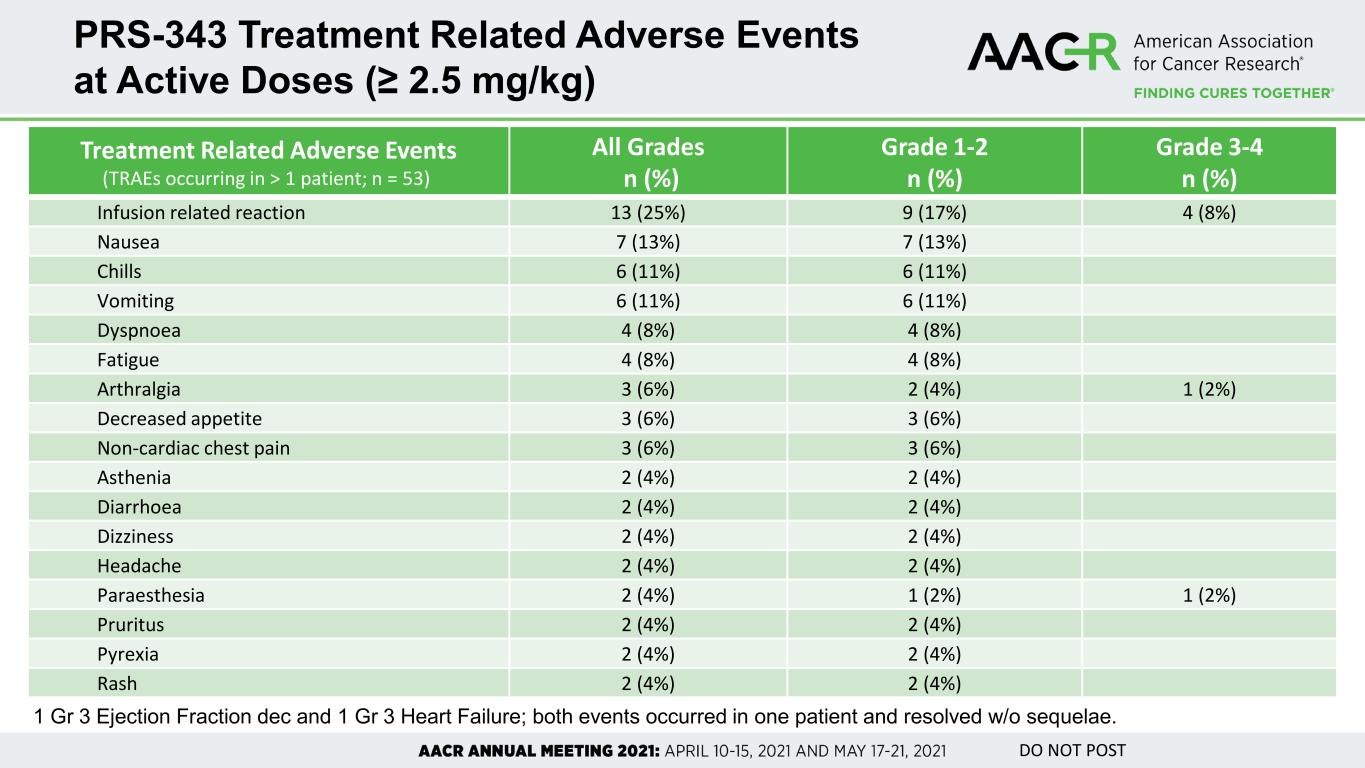
PRS-343 Treatment Related Adverse Events at Active Doses (≥ 2.5 mg/kg) Treatment Related Adverse Events (TRAEs occurring in > 1 patient; n = 53) All Grades n (%) Grade 1-2 n (%) Grade 3-4 n (%) Infusion related reaction 13 (25%) 9 (17%) 4 (8%) Nausea 7 (13%) 7 (13%) Chills 6 (11%) 6 (11%) Vomiting 6 (11%) 6 (11%) Dyspnoea 4 (8%) 4 (8%) Fatigue 4 (8%) 4 (8%) Arthralgia 3 (6%) 2 (4%) 1 (2%) Decreased appetite 3 (6%) 3 (6%) Non-cardiac chest pain 3 (6%) 3 (6%) Asthenia 2 (4%) 2 (4%) Diarrhoea 2 (4%) 2 (4%) Dizziness 2 (4%) 2 (4%) Headache 2 (4%) 2 (4%) Paraesthesia 2 (4%) 1 (2%) 1 (2%) Pruritus 2 (4%) 2 (4%) Pyrexia 2 (4%) 2 (4%) Rash 2 (4%) 2 (4%) 1 Gr 3 Ejection Fraction dec and 1 Gr 3 Heart Failure; both events occurred in one patient and resolved w/o sequelae. DO NOT POST
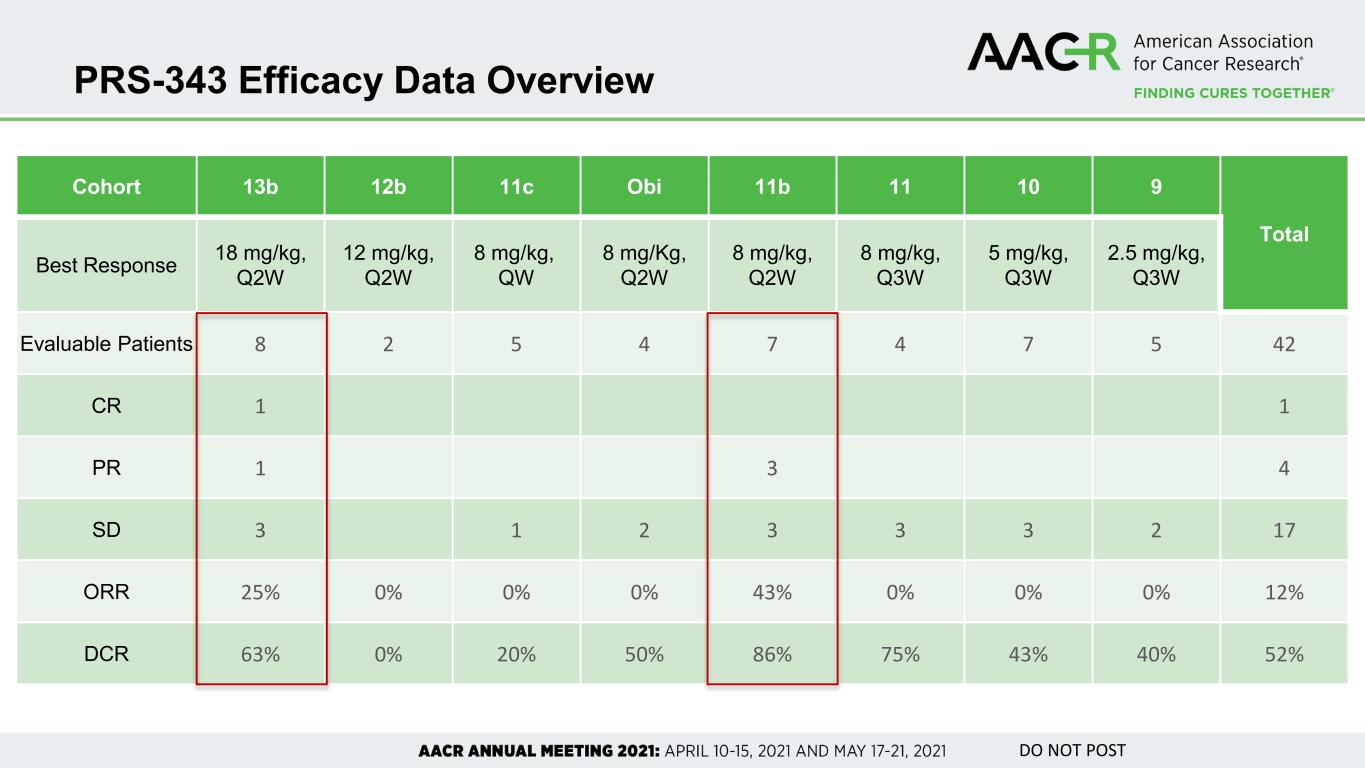
PRS-343 Efficacy Data Overview Cohort 13b 12b 11c Obi 11b 11 10 9 Total Best Response 18 mg/kg, Q2W 12 mg/kg, Q2W 8 mg/kg, QW 8 mg/Kg, Q2W 8 mg/kg, Q2W 8 mg/kg, Q3W 5 mg/kg, Q3W 2.5 mg/kg, Q3W Evaluable Patients 8 2 5 4 7 4 7 5 42 CR 1 1 PR 1 3 4 SD 3 1 2 3 3 3 2 17 ORR 25% 0% 0% 0% 43% 0% 0% 0% 12% DCR 63% 0% 20% 50% 86% 75% 43% 40% 52% DO NOT POST
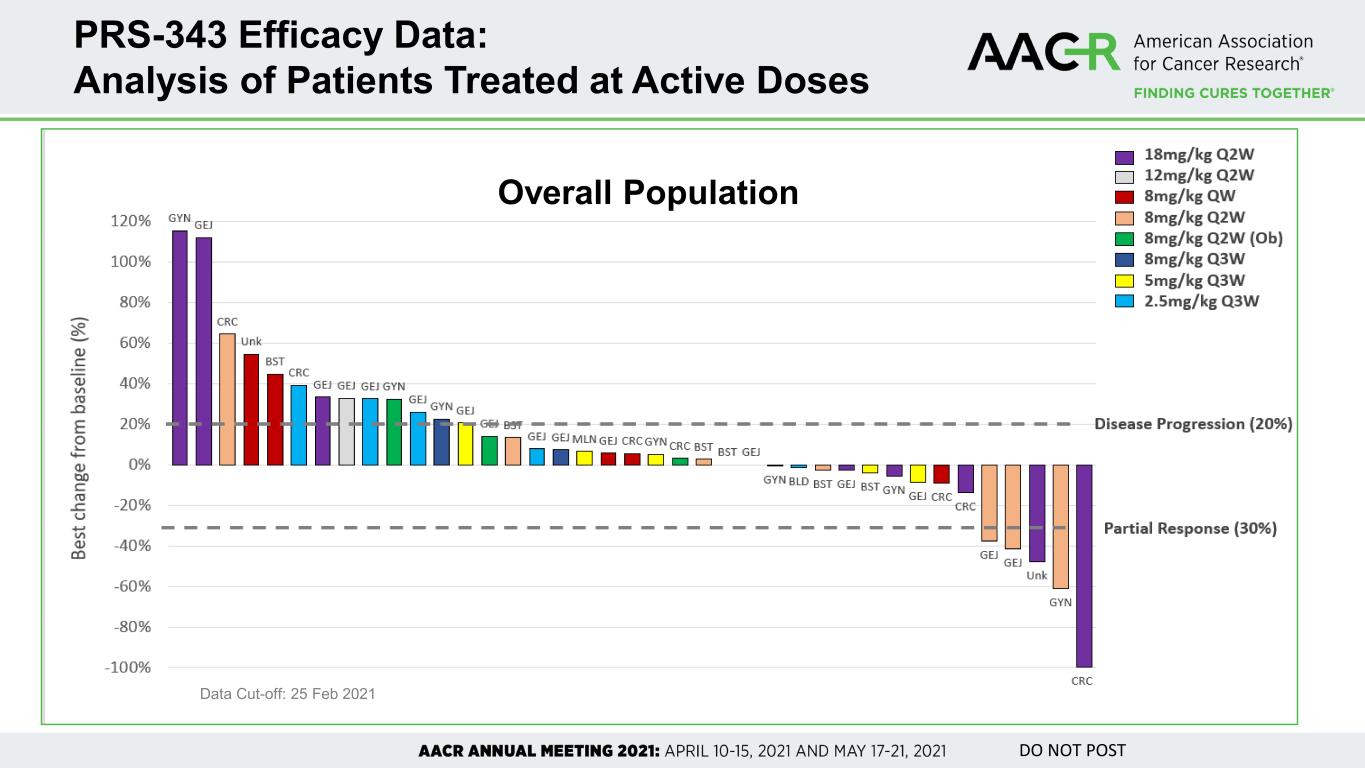
PRS-343 Efficacy Data: Analysis of Patients Treated at Active Doses Data Cut-off: 25 Feb 2021 Overall Population DO NOT POST
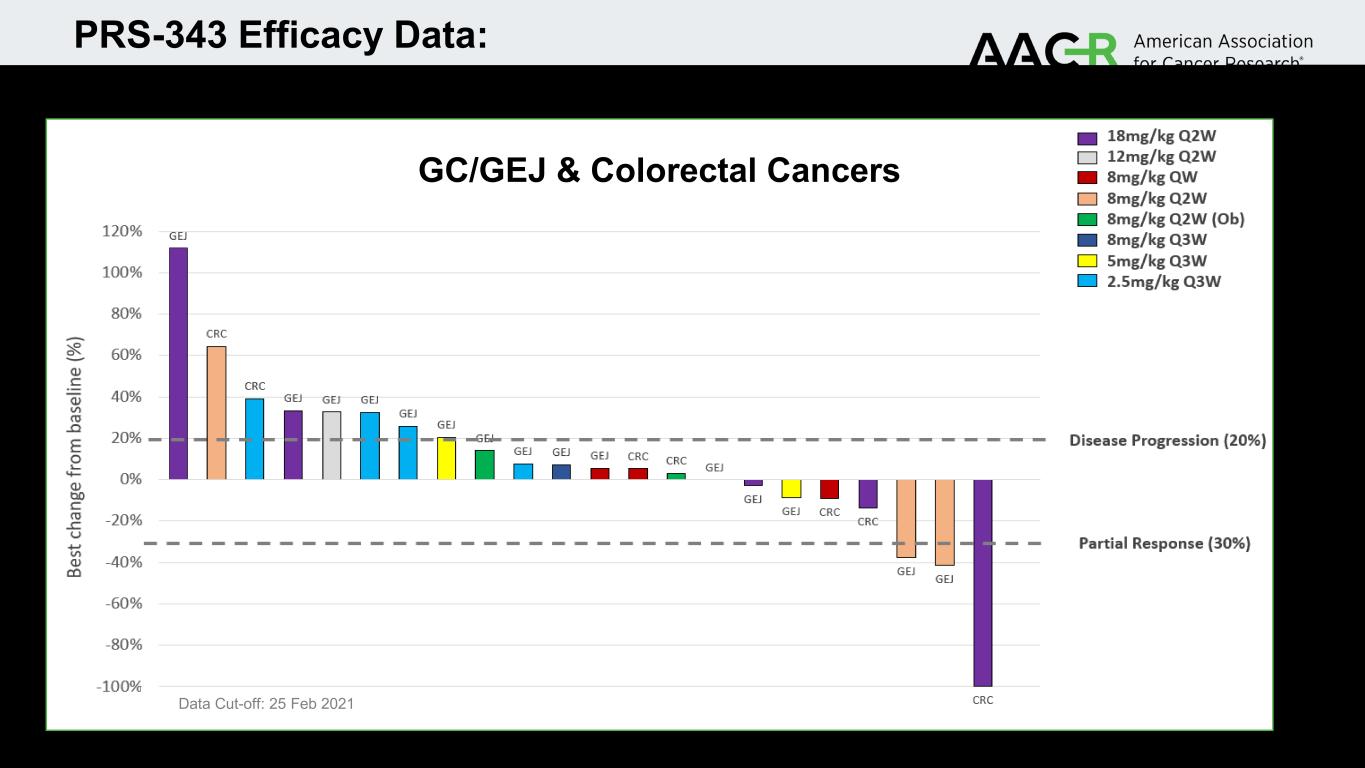
PRS-343 Efficacy Data: Analysis of Patients Treated at Active Doses GC/GEJ & Colorectal Cancers Data Cut-off: 25 Feb 2021 DO NOT POST
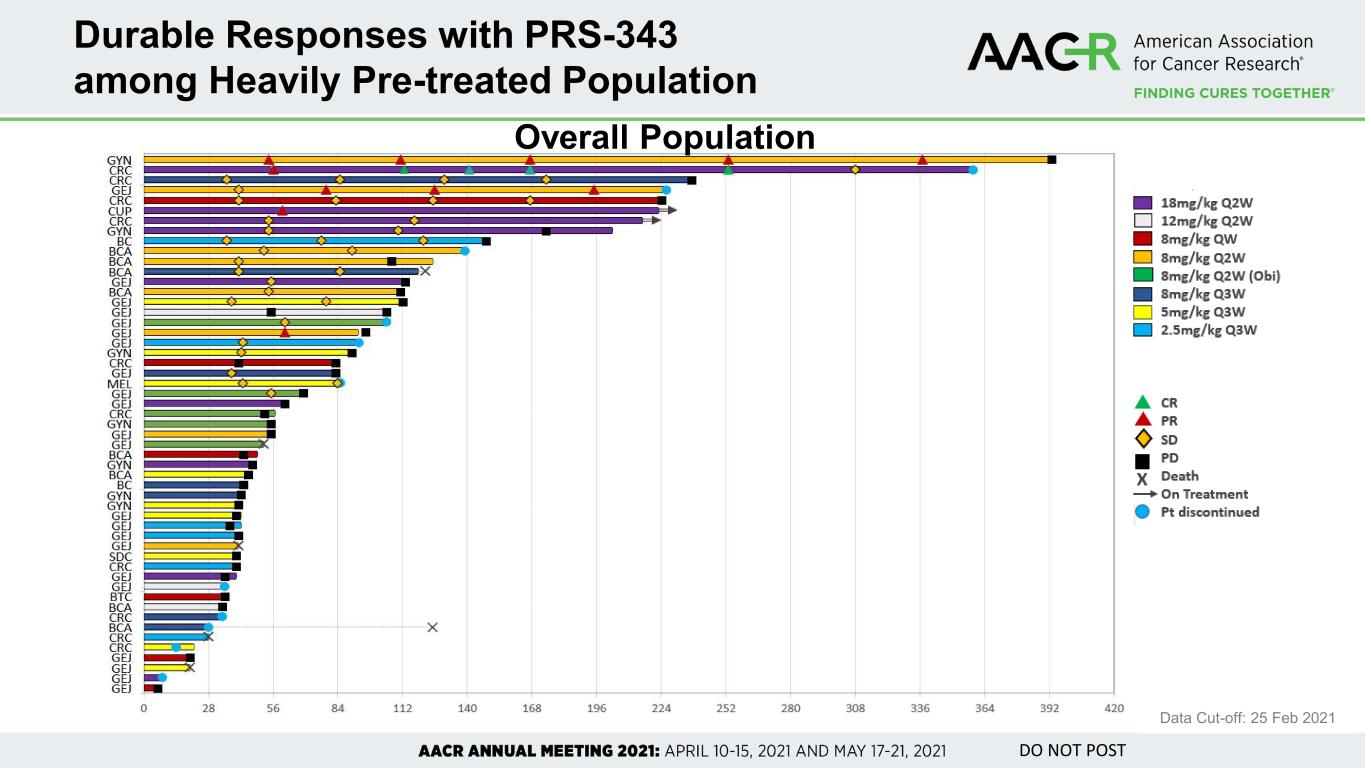
Durable Responses with PRS-343 among Heavily Pre-treated Population DO NOT POST Data Cut-off: 25 Feb 2021 Overall Population
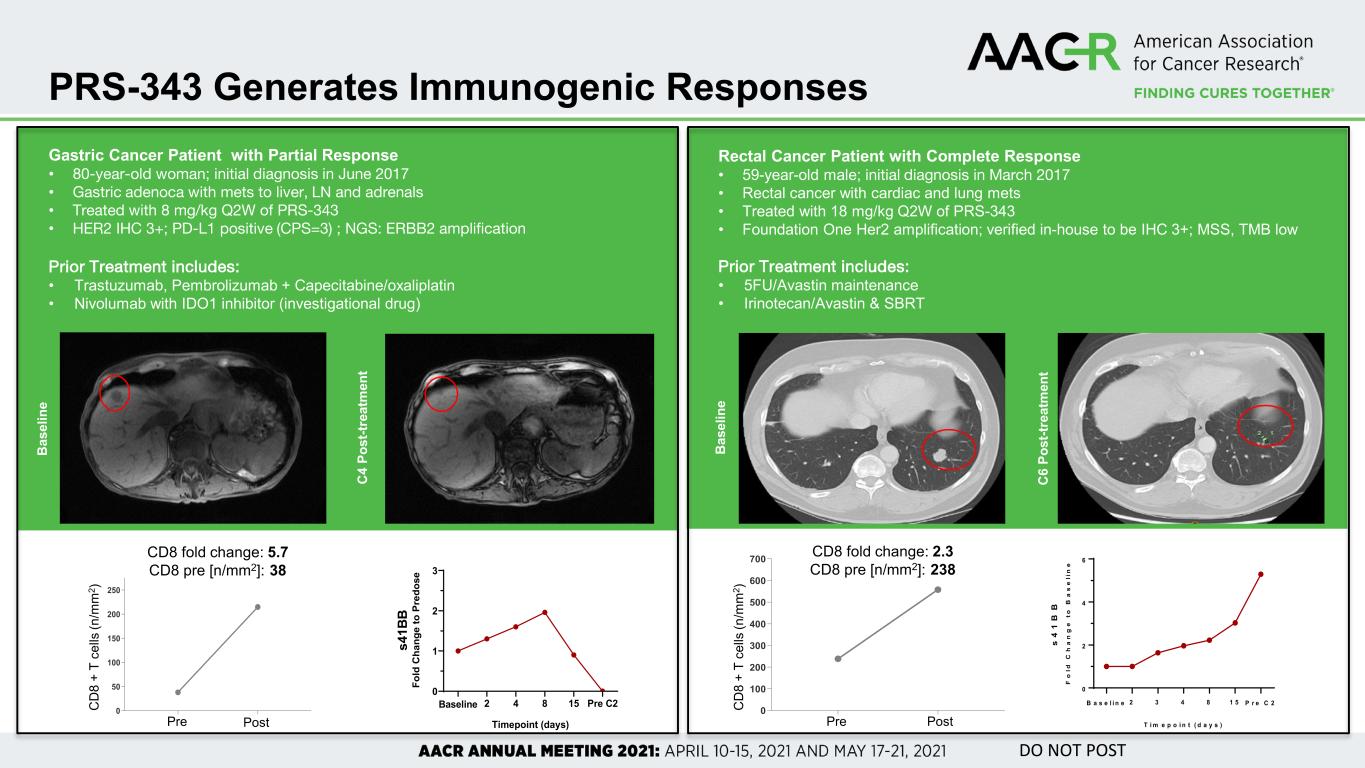
Rectal Cancer Patient with Complete Response • 59-year-old male; initial diagnosis in March 2017 • Rectal cancer with cardiac and lung mets • Treated with 18 mg/kg Q2W of PRS-343 • Foundation One Her2 amplification; verified in-house to be IHC 3+; MSS, TMB low Prior Treatment includes: • 5FU/Avastin maintenance • Irinotecan/Avastin & SBRT Gastric Cancer Patient with Partial Response • 80-year-old woman; initial diagnosis in June 2017 • Gastric adenoca with mets to liver, LN and adrenals • Treated with 8 mg/kg Q2W of PRS-343 • HER2 IHC 3+; PD-L1 positive (CPS=3) ; NGS: ERBB2 amplification Prior Treatment includes: • Trastuzumab, Pembrolizumab + Capecitabine/oxaliplatin • Nivolumab with IDO1 inhibitor (investigational drug) Pre C D 8 + T ce lls (n /m m 2 ) 0 100 200 300 400 500 600 700 Post CD8 fold change: 2.3 CD8 pre [n/mm2]: 238 2 3 4 8 1 5 0 2 4 6 s 4 1 B B F o ld C h a n g e t o B a s e li n e T i m e p o i n t ( d a y s ) B a s e l i n e P r e C 2 Pre C D 8 + T ce lls (n /m m 2 ) Post CD8 fold change: 5.7 CD8 pre [n/mm2]: 38 0 50 100 150 200 250 PRS-343 Generates Immunogenic Responses B as el in e C 4 P os t- tr ea tm en t B as el in e C 6 P os t- tr ea tm en t 2 4 8 15 Pre C2 0 1 2 3 s4 1B B Fo ld C ha ng e to P re do se Timepoint (days) Baseline DO NOT POST
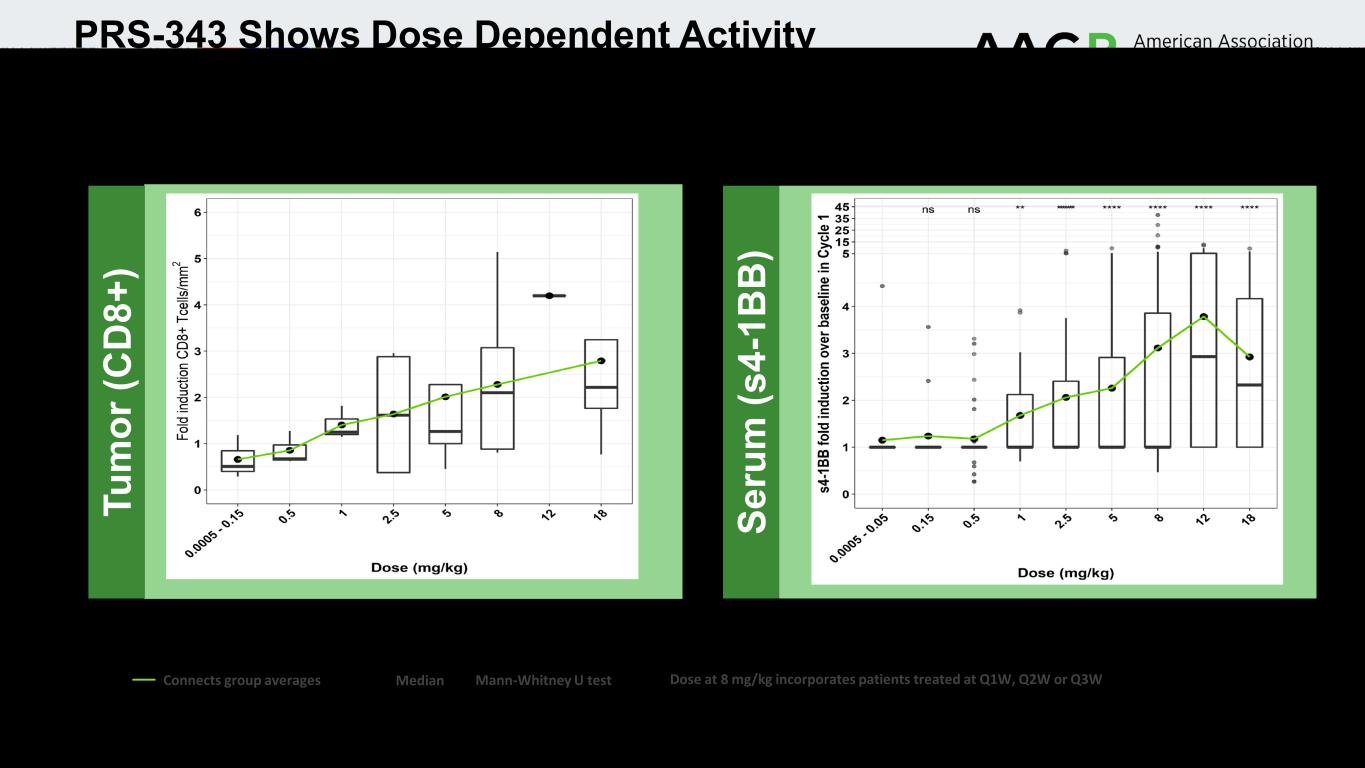
PRS-343 Shows Dose Dependent Activity across Key Pharmacodynamic Parameters S er um (s 4- 1B B ) Tu m or (C D 8+ ) Mann-Whitney U testConnects group averages Median Dose at 8 mg/kg incorporates patients treated at Q1W, Q2W or Q3W DO NOT POST
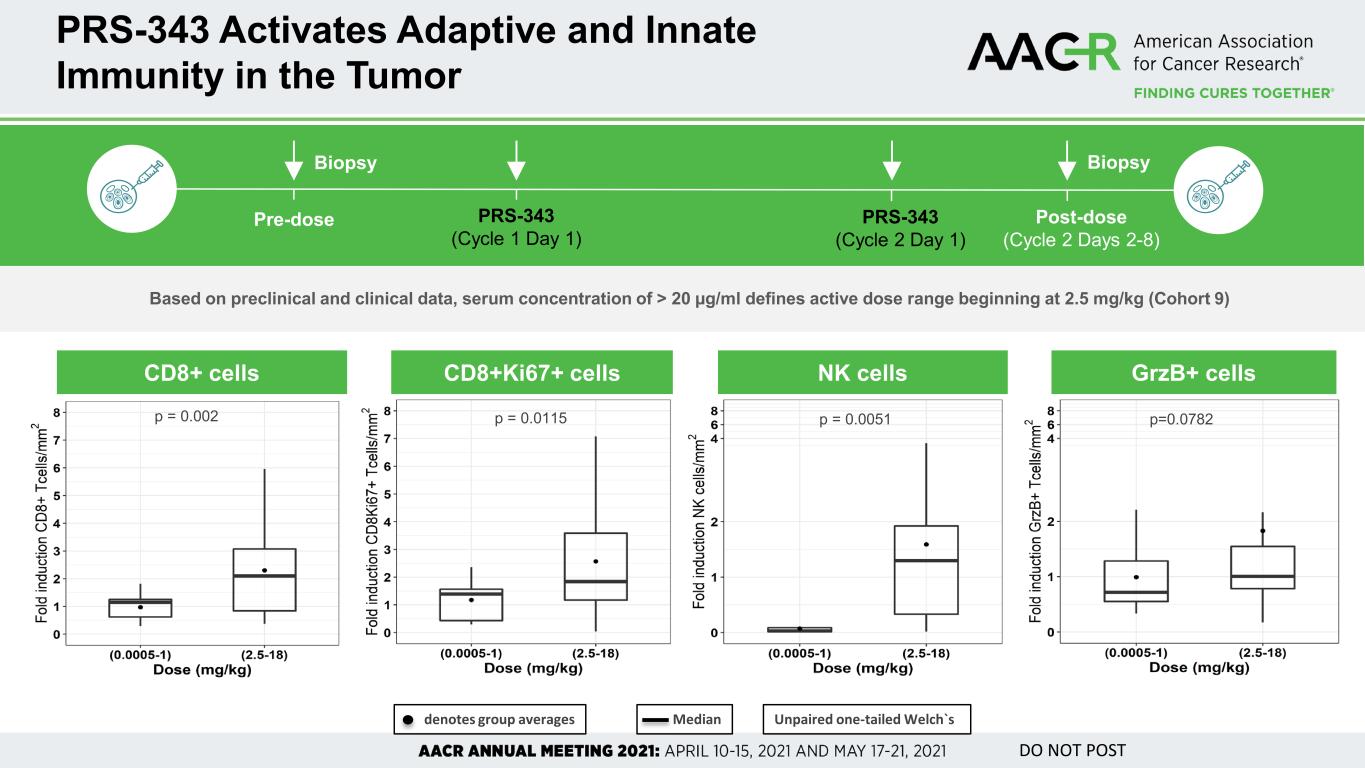
PRS-343 Activates Adaptive and Innate Immunity in the Tumor p = 0.002 CD8+ cells p = 0.0115 CD8+Ki67+ cells p = 0.0051 NK cells p = 0.1551 GrzB+ cells denotes group averages Median Unpaired one-tailed Welch`s Biopsy Pre-dose Biopsy Post-dose (Cycle 2 Days 2-8) PRS-343 (Cycle 2 Day 1) PRS-343 (Cycle 1 Day 1) p=0.0782 Based on preclinical and clinical data, serum concentration of > 20 µg/ml defines active dose range beginning at 2.5 mg/kg (Cohort 9) DO NOT POST
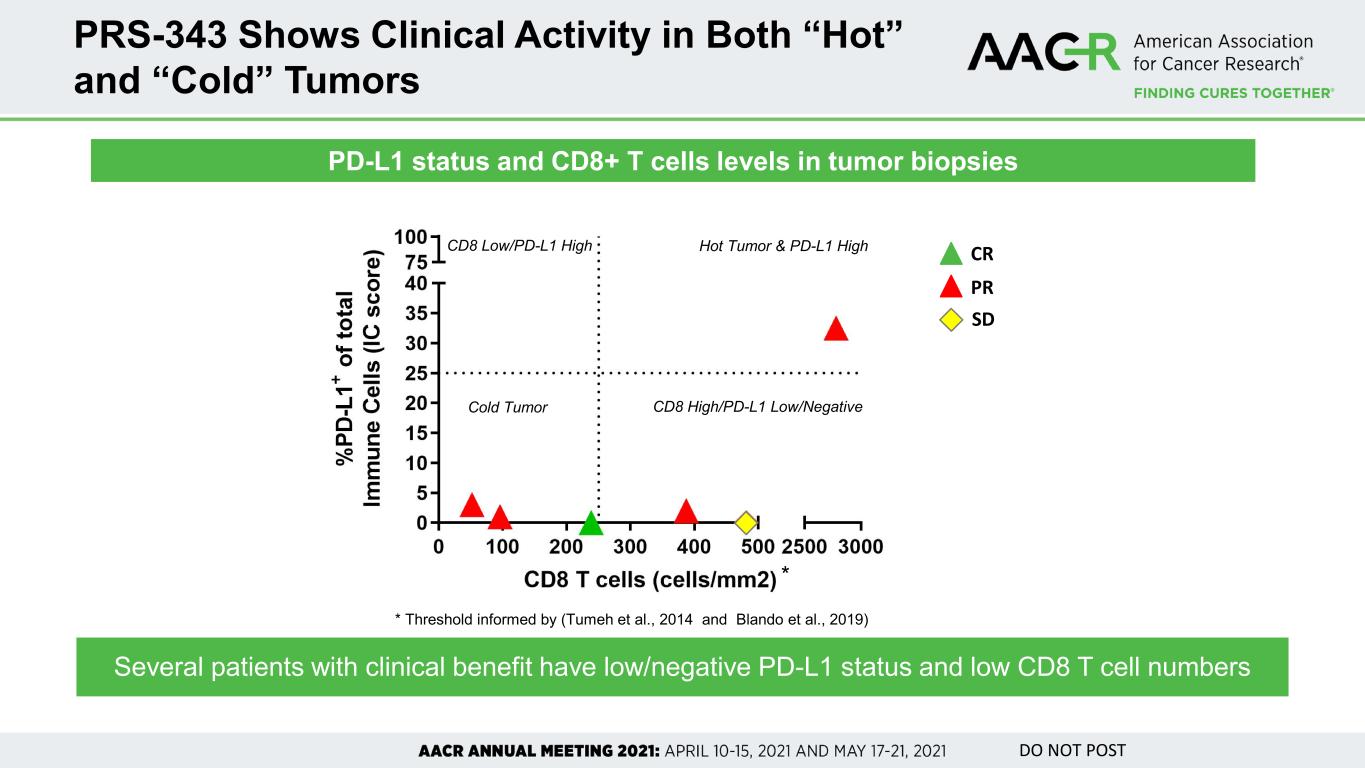
PRS-343 Shows Clinical Activity in Both “Hot” and “Cold” Tumors PD-L1 status and CD8+ T cells levels in tumor biopsies Several patients with clinical benefit have low/negative PD-L1 status and low CD8 T cell numbers * Threshold informed by (Tumeh et al., 2014 and Blando et al., 2019) PR SD CR Cold Tumor Hot Tumor & PD-L1 High CD8 High/PD-L1 Low/Negative CD8 Low/PD-L1 High * DO NOT POST
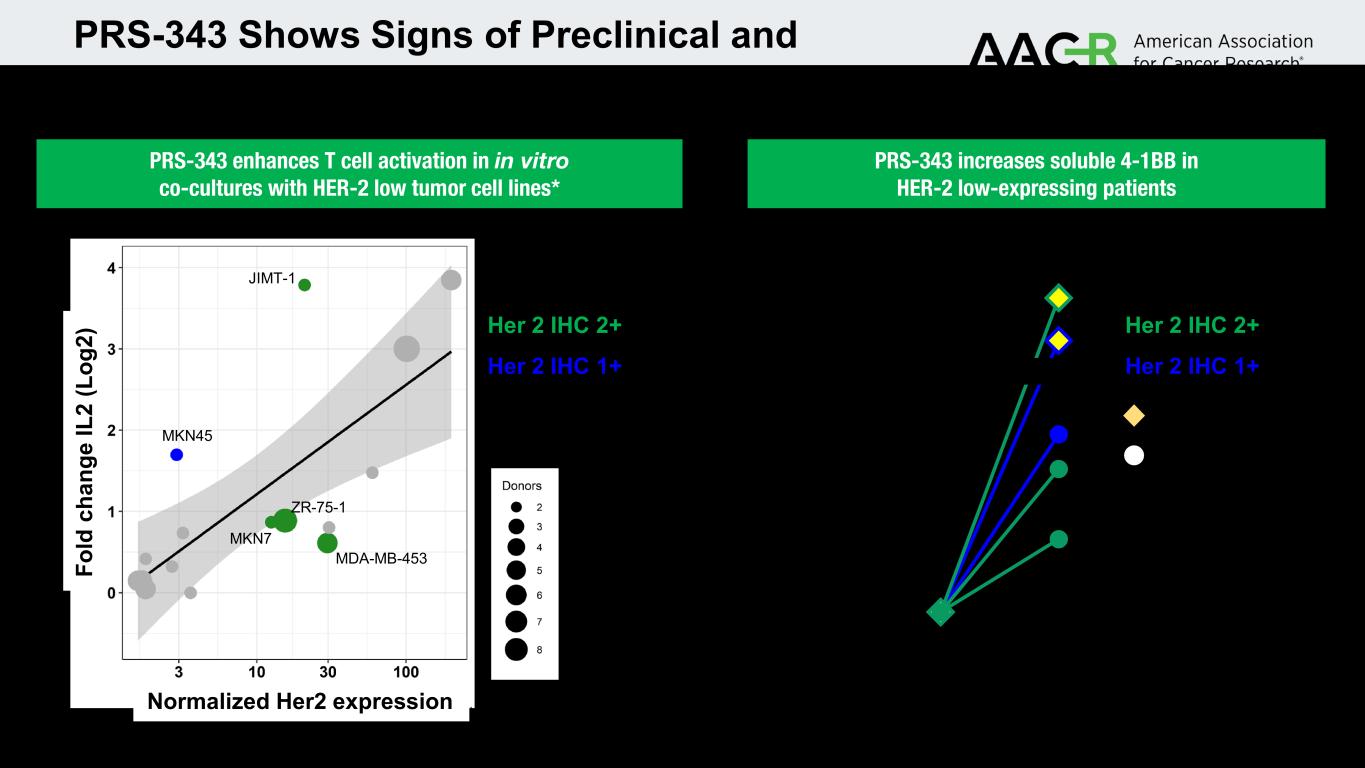
PRS-343 Shows Signs of Preclinical and Clinical Activity in the HER-2 Low Setting PRS-343 increases soluble 4-1BB in HER-2 low-expressing patients Her 2 IHC 2+ Her 2 IHC 1+ PRS-343 enhances T cell activation in in vitro co-cultures with HER-2 low tumor cell lines* * Hinner et al Clin Can Res 2019 Fo ld c ha ng e IL 2 (L og 2) Normalized Her2 expression Baseline On-tx 0 5 10 40 60 Her 2 IHC 2+ Her 2 IHC 1+ Patient with SD Patient with PD M ax im um s4 -1 B B fo ld -in du ct io n to ba se lin e JIMT-1 MDA-MB-453 ZR-75-1 MKN7 MKN45 DO NOT POST
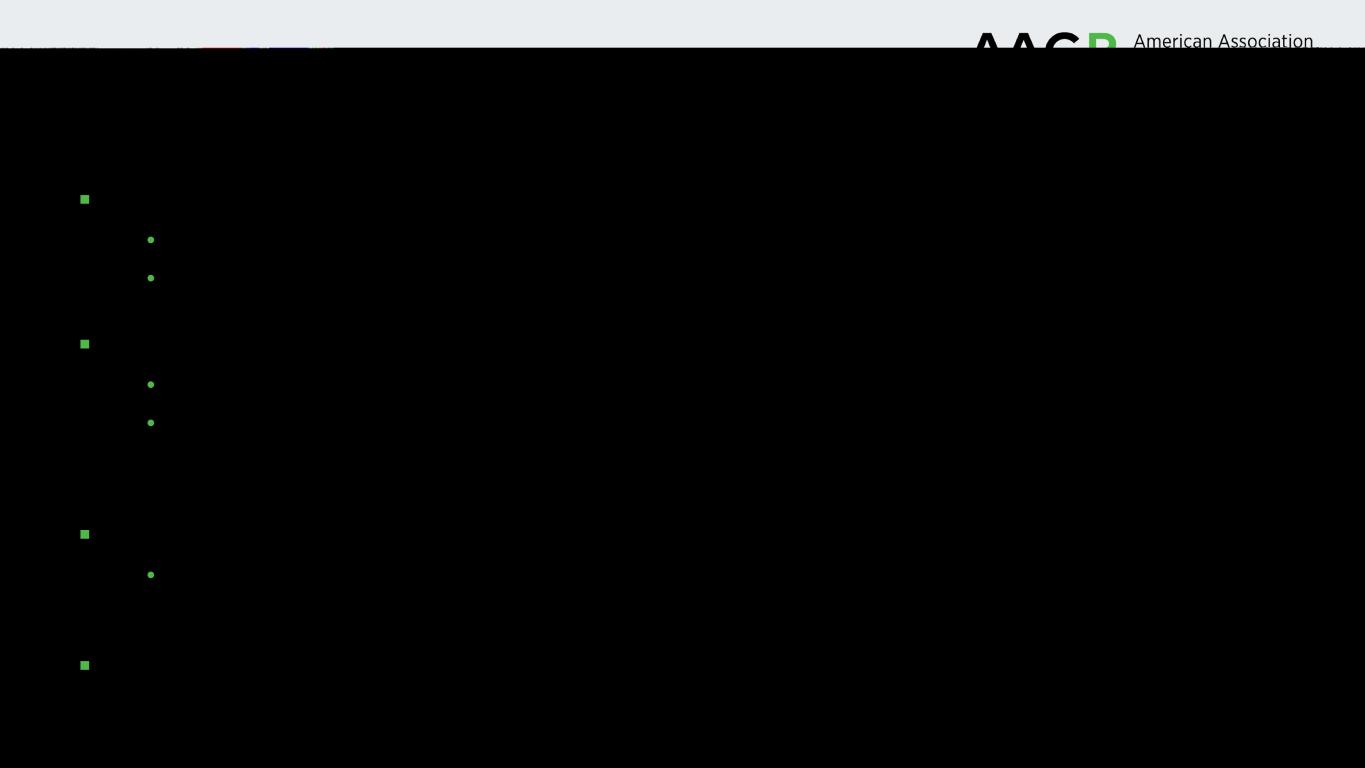
Summary Conclusions Monotherapy PRS-343 is well tolerated and safe up to 18 mg/kg • No significant specific anti-HER2 or anti-4-1BB safety signal • No dose limiting toxicity identified Dose-dependent Immune activation demonstrated • Increase in CD8+ T cell, NK cells and cytotoxic activity in tumor microenvironment • Soluble 4-1BB increases in the blood indicating target engagement of 4-1BB and activation of immune cells Demonstrated durable anti-tumor activity in heavily pre-treated population • Preliminary evidence of activity among “cold” tumor types and HER2 low patients Emerging data supports continued Ph 2 development of PRS-343 DO NOT POST

Acknowledgements Patients, their families and caregivers Pieris Pharmaceuticals Team Investigators, as well as their site personnel Sarina Piha-Paul, MD Anderson Cancer Center, Houston, TX Johanna Bendell, Sarah-Canon Research Institute, Nashville, TN Anthony Tolcher, NEXT Oncology, San Antonio, TX Rachna T. Shroff, University of Arizona Cancer Center, Tucson, AZ Paula Pohlman, Georgetown Lombardi Cancer Center, Washington, DC Sara A. Hurvitz, University of California Los Angeles, Los Angeles, CA Anuradha Krishnamurthy, University of Pittsburgh Medical Center, Pittsburgh, PA Geoffrey Ku, Memorial Sloan Kettering Cancer Center, New York NY DO NOT POST